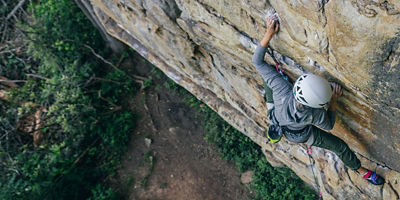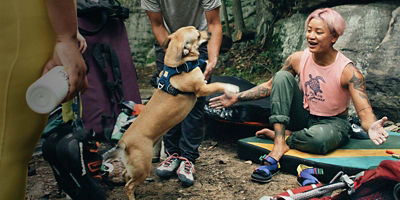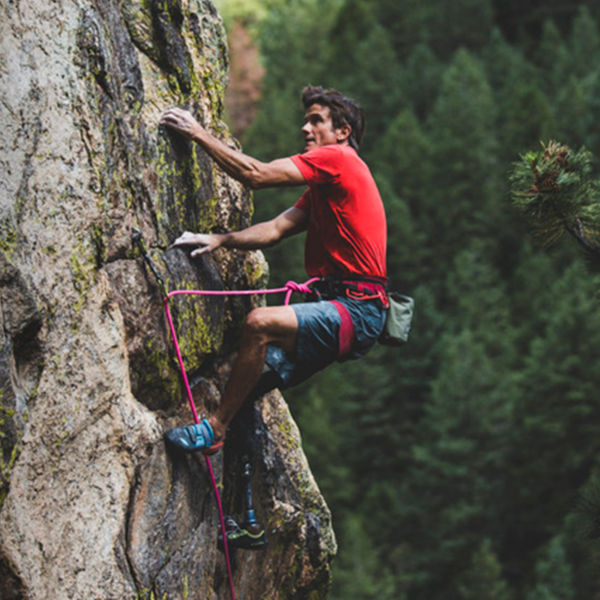
Climbing with a significant other isn’t always easy, despite how hard we want it to be. We hear about people like Janelle and Mark Smiley, who did nearly all the “50 Classic Climbs in North America” together, or pros Adrian Ballinger and Emily Harrington who once enjoyed a casual date climb up Mount Everest. We look at climbing, then we look at our life partner, and often think: “Oh yeah. We’re going to be a power couple.”
The trouble is that reality and expectations don’t often converge, especially with a sport as complex as climbing. Climbing is unique in that excelling at it—or heck, even just enjoying it—requires some combination of technique, fitness, technical safety knowledge, comfort with heights, decent self-awareness, and good communication skills. That last part (the good communication skills) is what needs particular attention. After all, it’s the all-important crux of any successful climbing partnership, let alone a romantic one.
To help understand just how critically that communication factors, we spoke to climbing couple Heather and Chris Weidner. Each comes with their own bonafides: Heather was the first woman to send the Boulder, Colo., testpiece China Doll (5.14a R), and is one of only a handful of women in the world to climb 5.14 trad. Chris is also an elite climber as well as a prominent first-ascensionist and a guidebook author. The two have been climbing together since 2011 (and just welcomed their first son, Dallas, in December 2021).
Here are the Weidners’ tips for climbing in a relationship, supporting each other, and keeping it fun—whether it’s your first outing together or your hundredth.
1. Clear the Expectations
Dreaming of summiting Mount Rainier together? Climbing El Capitan? Hold your horses. Climbing mastery takes years, and everyone progresses at a different rate. The first step to good communication is listening to the other person’s needs and wants at any given moment—and being willing to adjust yours accordingly.
2. Talk About Goals
If one partner is acting as a mentor, it can be easy for them to fixate on buying new gear, learning new skills, and pushing grades. “All of that is awesome and can be healthy, but it’s also so easy to lose focus on the joy of being outside together, moving together, and trusting each other, which is the greatest gift of climbing,” Chris says. Make sure both partners are on the same page when it comes to longer-term goals.
3. Err on the Side of Too Easy
If you’re taking your partner climbing for the first time, your first priority is to make sure they have fun, not to push them to the edge of their comfort zone.
“Drawing from my experience guiding, I would say the best-case scenario for a first time climbing is for your significant other to be like, ‘Wow, this is so easy it’s almost boring,’” he says. “The mistake almost everyone makes is to say, ‘OK let’s just put him on a 5.8 and see what happens,’ when what you want to be doing is putting him on some 5.2 slabs. Create a hunger for more. The best way to do that is to start off super easy.”
4. Adjust Your Feedback Style
Aside from critical safety directives, try to avoid offering unsolicited advice.
“Have a conversation with your partner while you’re both on the ground,” Chris advises. “Some people don’t want communication while they’re on the wall, and some people want [a] running [string of] beta. Before leaving the ground, ask them what they need and whether they like encouragement.”























